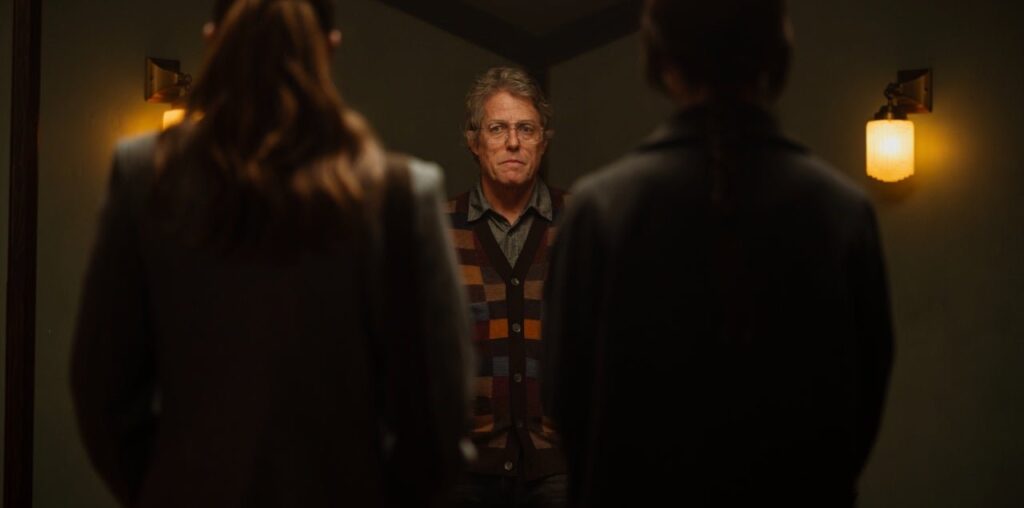
As a horror movie, it’s one of the most interesting and fun of the year. It’s not the scariest story to have ever graced the big screen, but it’s certainly very creepy and (at times) gross, which makes for an exciting watch. Most exciting is Grant, who utilizes a storied career of playing heartthrobs to become charmingly sinister. He has a larger-than-life presence, even as a somewhat demure looking man dressed in a comfy cardigan and sneakers with sole-support, living in an old, creaky house.
He monologues grandly about the history of world religion, playing “The Air That I Breathe” by The Hollies on repeat in a way that would set him up as a beloved professor — if it wasn’t obvious at the time that he was holding the girls hostage.
Part of what makes “Heretic” so successful is the fact that the movie isn’t bound to its simple premise, and in fact it quickly gets much wilder. The movie itself makes a statement with this: It isn’t as simple as the choice between “belief” and “disbelief.” In fact, faith is a layered and kaleidoscopic thing, incorporating historical texts and facts as well as more elusive concepts like love, joy, tradition and community.
It would also be easy for the movie’s main message to make fun of the missionaries as members of the LDS. In stories centered around Mormons, it’s a common thing to do — if it isn’t making a critique of the religion, it’s poking fun at it.
For a moment, it seems like that’ll be the case: The movie opens on the missionaries having a painfully awkward conversation about sex, in which they argue about Magnum condoms and one, the more innocent Sister Paxton, says God was revealed to her while she was watching an amateur porno.
There are a few additional jokes that use Mormonism as a subject, yes. The Elder, who arrives as a potential savior, leaves without asking follow-up questions — just not before fetching an introductory pamphlet to give Mr. Reed. In his grand monologue, Mr. Reed refers to Mormonism as a “zany regional spinoff” when compared to other Abrahamic faiths. But these jokes blend seamlessly with the rest of the movie’s dark, tongue-in-cheek humor, which is mostly successful in garnering a laugh.
The jokes are also entirely separate from the movie’s message, which takes a much more positive stand on religion as a whole.
Mr. Reed tells the missionaries he began studying religion in college, and while he’s delved into every major world religion and then some, he later reveals he has a particular fascination with what he calls “The Big Three”: Judaism, Christianity and Islam. It began as a fascination, and it unwillingly turned into a search for what he regularly refers to as the “one true religion.” In short, he’s studied religion so deeply — and removed the more conceptual elements like love and community — that he’s driven himself to near-insanity.
As his horrifying plot is at last revealed in full, it’s Sister Paxton who must stand witness. When she emerges at last, she still has her faith — it’s a changed faith, certainly, but it’s still faith. It’s a beautiful way to end, and it’s a surprising one.
For the young, religious woman to emerge as a victor of sorts — both physically and spiritually — isn’t entirely uncommon among horror tropes, and in fact Sister Paxton is a textbook final girl. But it is somewhat uncommon in religious media, specifically as it comes to LDS members.
For the young, proudly Mormon woman to emerge as a victor is an exciting thing, as it drives home the point that religion is about more than just its history, and that there’s always something beautiful to be found in belief.

